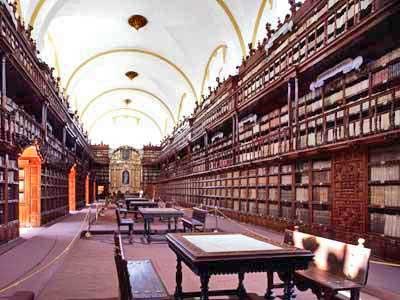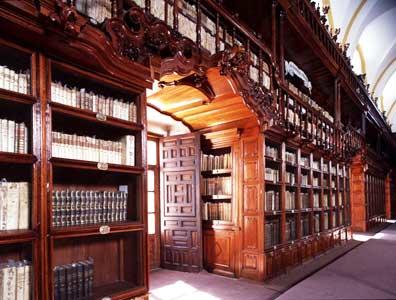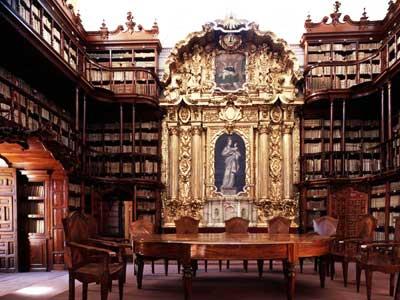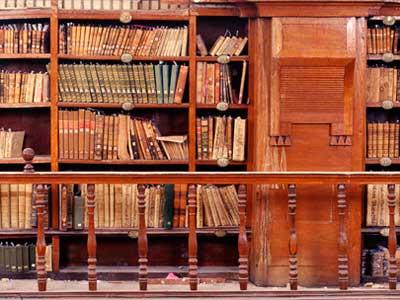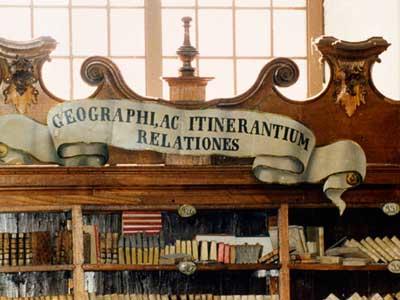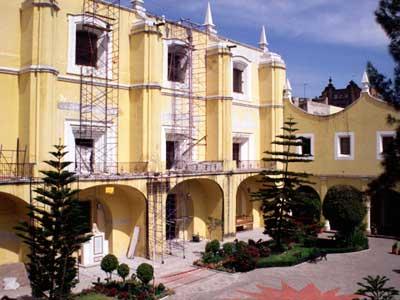Palafoxiana Library
Background
The origins of Palafoxiana Library date to 1646 when a personal collection of approximately 5,000 volumes was contributed to the Colegio de San Juan y San Pedro by Bishop Juan de Palafox y Mendoza. In 1773, Bishop Don Francisco Fabián y Fuero ordered the construction of the Palafoxiana Library in the historic center of the city of Puebla to house Bishop Juan’s donation. The walls of the 43-meter-long library were fitted with two tiers of bookshelves made of ayacahuite pine, cedar, and coloyote wood. The western wall displays the mid-14th century retable of the Madonna of Trapana, painted by Nino Pisano. Throughout the colonial period, large quantities of prints and manuscripts were donated by other bishops, different religious institutions, and private individuals, and the library grew to rival the finest libraries of 18th-century Europe. The library’s collection grew to over 41,000 volumes in the 19th century, requiring a third tier of bookshelves. The added weight of these bookshelves contributed to the damage sustained during the 1999 earthquakes, as the older lower levels had weakened due to insect damage. These conditions, combined with the weight of the third tier, made the bookcases more susceptible to damage during the earthquakes. The baroque cloistered building still has many architectural and decorative elements, including the original 18th century wooden bookcases.
How We Helped
Following the 1999 earthquakes, WMF participated in a restoration project to consolidate the building structure and annexes of the library, restore the building, and renovate the interior. The earthquakes had caused large cracks in the vaults and walls, especially over the window bays, and further damage was caused by heavy rainfall. WMF supported the restoration of the wooden bookcases, restructuring them using cantilevered joists anchored in the wall, rather than in the stacks below, to reduce the weight of the third tier of shelves on the lower stacks so they would stand up to further seismic activity. The project also focused on the restoration of the Virgin of Trapana altar, the sculpture of Don Juan de Palafox y Mendoza, and the main door. Palafoxiana Library reopened in 2003. In 2008, WMF supported the conservation of the historic tile floor, which was originally made from clay and talavera and had deteriorated from dust and other residues over time.
Why It Matters
The libraries of the religious orders of Mexico were located in Puebla, Morelia and Oaxaca. Palafoxiana in Puebla is the oldest library in the Americas, and is the only library of the three that remained intact and authentic, as it was continuously conserved. After the 1999 earthquakes more than 1,000 listed historic buildings in Puebla had suffered some damage, and the heritage of Puebla was in a state of emergency. The restoration project returned the library to its original grandeur and strengthened the architectural elements so that the building and its bookshelves would withstand vibrations from future earthquakes. The project helped to preserve the cultural legacy and philanthropic history of the library and the city of Puebla.

